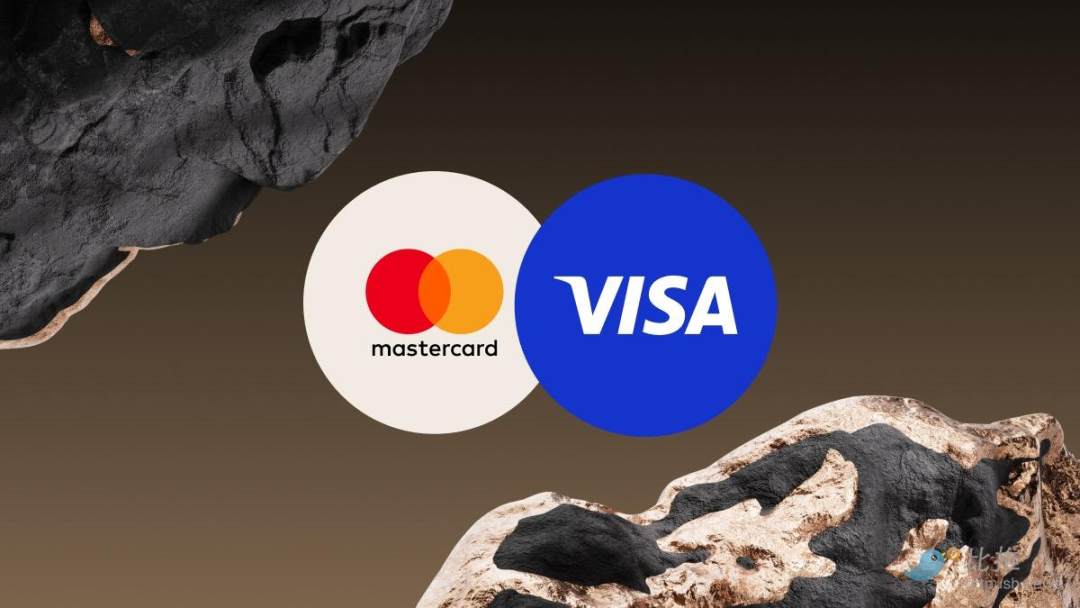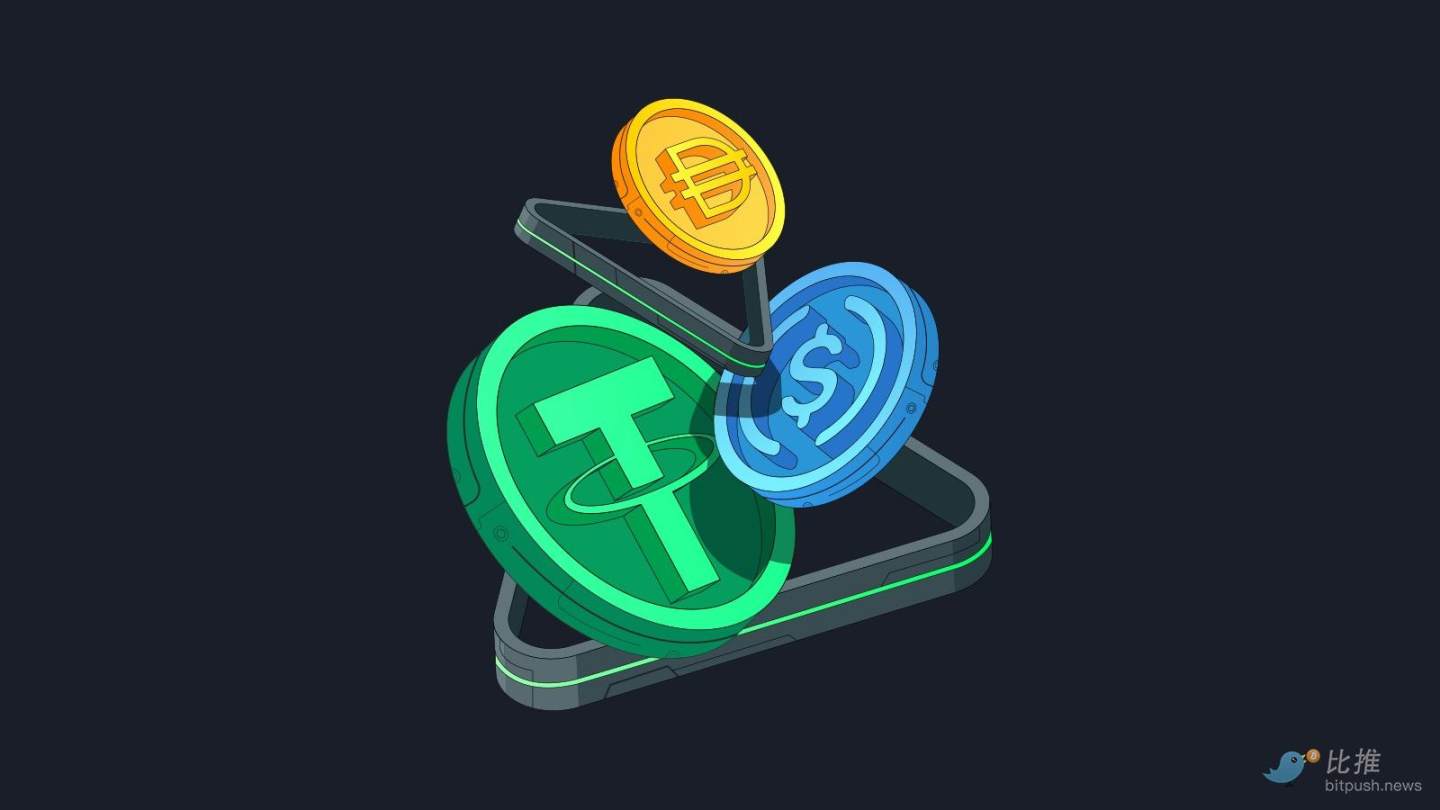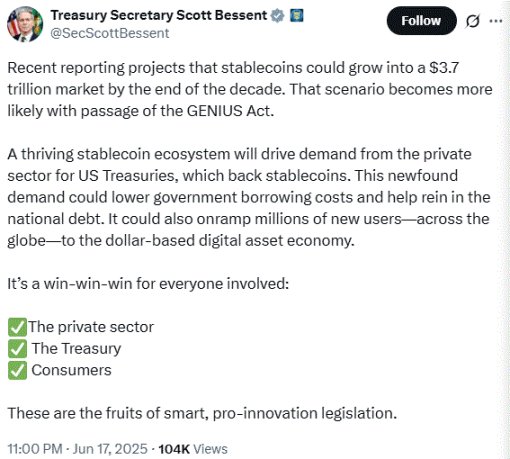Written by: BitpushNews
The digital payment sector is witnessing an intense territorial battle, as the once-dominant payment giants Visa and Mastercard face direct challenges from the emerging wave of stablecoins. This is not just a technological revolution but a defensive and offensive struggle for the future dominance of payments.

Stablecoins: A Threat to Emerging Payment Methods
For a long time, Visa and Mastercard have held an undisputed position in the digital payment space due to their vast networks and strong brands. However, the rise of a new type of digital currency—stablecoins—poses an unprecedented challenge to their traditional business models.
The core threat points are:
Cost Advantage: Stablecoins allow consumers to pay merchants directly from their crypto wallets, bypassing the traditional banking and card networks. This means that the substantial "swipe fees" that merchants pay to card networks each year can be significantly reduced or even eliminated (last year, U.S. businesses paid about $187 billion for this).
Efficiency Improvement: Stablecoins promise faster settlement speeds, especially for cross-border payments, where their immediacy and low-cost advantages are particularly pronounced, making this one of the most popular use cases for stablecoins.
Bypassing Giants: Stablecoins provide a way to complete transactions without relying on Visa and Mastercard networks, which could fundamentally shake the core positions of these two giants in the payment ecosystem.

The explosive growth of the stablecoin market further exacerbates this threat. Currently, the market capitalization of stablecoins has reached $253 billion, and U.S. Treasury Secretary Scott Bessent predicts it could exceed $3 trillion in the coming years.

This enormous market potential has attracted technology companies, crypto startups, and even large retailers (such as Walmart considering stablecoin pilots) to join the fray, collectively driving the development of the stablecoin payment ecosystem.
Within the crypto industry, the status of stablecoins has evolved from merely being a crypto asset anchor to becoming the underlying infrastructure of the digital economy. Their application scenarios and ecosystem development are maturing, further accelerating the impact on traditional payment systems:
Core Pillar of DeFi (Decentralized Finance): Stablecoins are central to the DeFi ecosystem, playing an indispensable role in lending, collateralization, liquidity mining, and decentralized exchanges (DEXs). The massive flow of stablecoin funds within DeFi protocols demonstrates their efficiency and wide acceptance as digital dollars.
Enhanced Cross-Chain Interoperability: With advancements in cross-chain technology (such as LayerZero), mainstream stablecoins like USDT and USDC have achieved multi-chain deployment and can seamlessly flow between different blockchains through bridging technology. For example, the Layer 1 blockchain Stable, supported by Bitfinex, uses Tether's USDT as its native gas token and integrates LayerZero's decentralized USDT0 token, aiming to create a more efficient and low-cost native stablecoin payment network.
Deepening Enterprise and Institutional Applications: An increasing number of crypto institutions and Web3 companies are adopting stablecoins as their internal standards for fund management and payment settlement. Institutional investors are also beginning to use stablecoins for large, rapid over-the-counter (OTC) trades and cross-border settlements, significantly reducing costs and time compared to traditional banking channels.
Tokenization Wave of Real-World Assets (RWA): Stablecoins serve as a bridge connecting RWAs with the blockchain world. As more real-world assets are tokenized and brought on-chain, stablecoins, as the primary pricing and settlement tool, will further expand their use cases to trading and clearing traditional financial assets.
New Payment Track Construction: In addition to the collaboration between Shopify and Stripe, Coinbase has launched its own payment platform aimed at supporting more e-commerce providers to accept stablecoin payments directly, offering a 1% USDC cashback incentive, thereby establishing a new payment link directly between merchants and consumers, completely bypassing traditional card networks. Additionally, banking technology provider Fiserv has also launched its own fiat-backed token to help small financial institutions keep up with payment innovations.
These concentrated actions within the industry are collectively building an increasingly mature and powerful stablecoin payment network, posing strong competition to the traditional payment routes that Visa and Mastercard rely on.
Visa and Mastercard's "Counterattack" and Strategies
In response to the impact of stablecoins, Visa and Mastercard are actively adjusting their strategies, attempting to transform from "old-fashioned fee collectors" to "backbones of various digital transactions," even if these transactions were initially intended to bypass them.
Key response strategies include:
Integration and Coexistence: The two giants no longer view stablecoins purely as competitors but are trying to "absorb" them into their networks. They have a historical precedent of maintaining pricing power through the integration of competitors, and this time is no different.
Technological Upgrades and Service Expansion:
Stablecoin Settlement and Crypto Cards: They are vigorously promoting their capabilities in stablecoin settlement and crypto-linked cards.
Cross-Border Payments: They emphasize their advantages in cross-border payments, which overlap with the popular use cases of stablecoins.
Tokenization Technology: They leverage their existing tokenization technology (e.g., obfuscating account information to protect consumers) and extend it to crypto assets. Visa's Chief Product and Strategy Officer Jack Forestell stated that while tokenization is currently primarily based on bank accounts or credit lines, "there is absolutely no reason it cannot be stablecoins or other cryptocurrencies."
Investments and Partnerships: Visa Ventures has invested in stablecoin infrastructure provider BVNK. Mastercard has joined the Paxos Global Dollar Network, supporting institutions in minting and redeeming stablecoins like USDG, and supporting Fiserv's FIUSD, PayPal's PYUSD, and Circle's USDC.
Flexible Payment Routing: Mastercard is exploring more refined payment routing controls, such as routing small transactions through checking accounts, large transactions through credit lines, and specific merchant transactions potentially being deducted from crypto wallets—all tied to a single payment identity.
Mastercard's Chief Product Officer Jorn Lambert believes that the emergence of stablecoins is more about "new use cases and new opportunities" rather than "replacing existing systems," especially in the areas of remittances, payments, and business-to-business payments.
Challenges Facing the Popularization of Stablecoins
Despite the promising outlook for stablecoins, fully disrupting traditional card networks, especially in the U.S., still faces numerous challenges:
Consumer Habits and Benefits: U.S. consumers are accustomed to the rewards, fraud protection, and convenient credit access provided by credit cards, advantages that stablecoins currently struggle to fully replace.
Cognition and Trust: For many ordinary consumers, cryptocurrencies remain unfamiliar or even suspicious, and stablecoin balances currently do not enjoy traditional financial protections like FDIC insurance.
Merchant Risks and Compliance: Adopting new payment technologies may expose merchants to compliance, tax, and operational risks, which require time and education to overcome.
Improvement of Regulatory Framework: Although the U.S. Congress is advancing stablecoin regulatory legislation such as the "GENIUS Act," representing an important step toward regulation, a complete and globally unified regulatory framework is still under construction and refinement, creating significant uncertainty for the widespread adoption of stablecoins.
Lack of Global Consensus: There are significant differences among countries and regions regarding the definition, issuance, reserve requirements, anti-money laundering (AML), and know your customer (KYC) standards for stablecoins. For example, the EU's MiCA (Markets in Crypto-Assets) regulation is relatively mature, while the U.S. is still exploring different paths at both federal and state levels. This fragmentation and lack of global coordination make it difficult for stablecoin issuers and users to operate seamlessly on a global scale.
Compliance Costs and Risks: For stablecoin issuers operating internationally, complying with different and sometimes conflicting regulations across multiple countries can be extremely costly and complex. This uncertainty also increases potential legal and regulatory risks, which could lead to future fines or business restrictions.
Institutional Concerns: Traditional financial institutions, large enterprises, and broader investors often adopt a wait-and-see attitude in the absence of clear and stable legal and regulatory guidance. They are concerned that future policy changes may affect the safety of their assets or the legality of their operations, thereby limiting the large-scale integration and application of stablecoins in the mainstream financial system.
Consumer Protection Concerns: Although some bills aim to protect consumers, the consumer protection mechanisms for stablecoins are not yet fully defined and unified compared to federal insurance for traditional bank deposits, which may affect ordinary users' confidence in their safety.
Can Stablecoins Completely Disrupt the Traditional Payment System?
So, will Visa and Mastercard be disrupted by stablecoins? Currently, it seems more likely to be an "evolution" rather than a "complete disruption."
History shows that the emergence of new payment methods, such as mobile wallets or "buy now, pay later," has often triggered warnings of "disruption," but ultimately evolved into adaptations and integrations by existing giants. Visa's Forestell points out that while crypto-native users can send funds back and forth, achieving widespread adoption for everyday use requires "massive connectivity," which is precisely what Visa and Mastercard can provide as the best "entry point."
Payment giants are leveraging their vast user bases, global merchant networks, strong risk control capabilities, and brand trust to incorporate stablecoins as a new tool within their existing ecosystems, actively investing and adjusting their technological frameworks for this purpose. Their goal is to make stablecoins a new "value" form within their existing "pipes," rather than a complete replacement.
Therefore, in the short term, the scenario of stablecoins "overnight" completely replacing existing card networks is unlikely to occur. However, the pressure brought by stablecoins will continue to force Visa and Mastercard to undergo profound strategic adjustments and technological innovations. The future payment landscape is likely to be a hybrid ecosystem that integrates traditional infrastructure with blockchain technology, and Visa and Mastercard are actively striving to continue playing a core role within it, but they must adapt and integrate these new "crypto pipes" to maintain their leadership in the digital payment space.
免责声明:本文章仅代表作者个人观点,不代表本平台的立场和观点。本文章仅供信息分享,不构成对任何人的任何投资建议。用户与作者之间的任何争议,与本平台无关。如网页中刊载的文章或图片涉及侵权,请提供相关的权利证明和身份证明发送邮件到support@aicoin.com,本平台相关工作人员将会进行核查。




